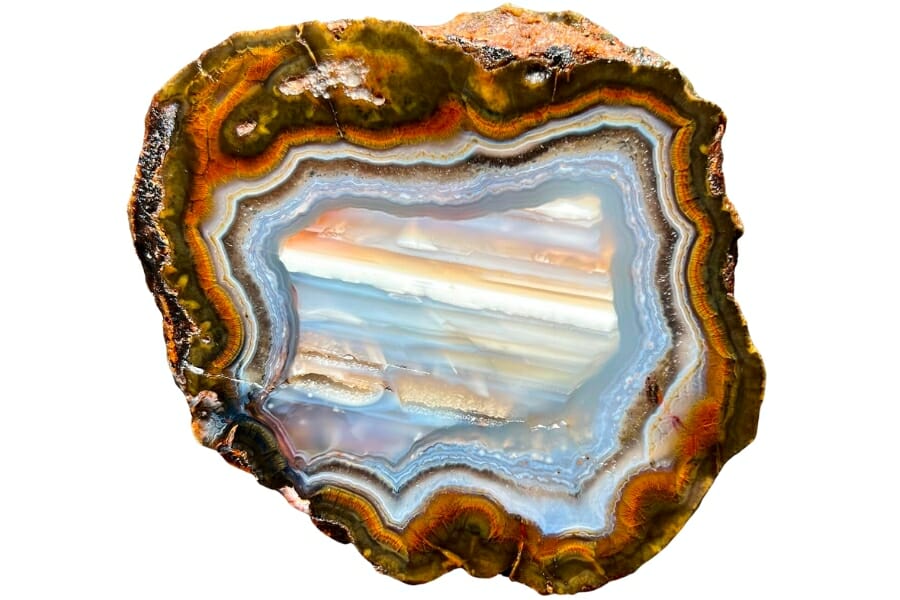Just hearing the names jasper and agate brings to mind beautiful, colorful, and captivating stones. Both of these stones are not just mesmerizing to look at— they also have some pretty fascinating stories behind them.
Agate and jasper have been used in jewelry, decorations, and even tools for centuries. People all over the world cherish them, not just because they’re pretty, but also because of the rich tales and legends they bring with them.
In this article, we’ll dive deep into understanding these natural wonders. What makes them different? Do they have things in common? Ultimately, we’ll unravel the different characteristics that set jasper vs agate apart and alike.
Every rock has a story, and here you’ll learn just how different and similar jasper and agate can be at the same time. Let’s get started!
Jasper vs Agate – The Major Differences
While jasper and agate can look so much alike at first glance, these two gems have a fair share of differences between them. Below are some of the major characteristics where the differences of agate vs jasper are most prominent:
Color – Jasper often has solid, earthy colors and opaque looks
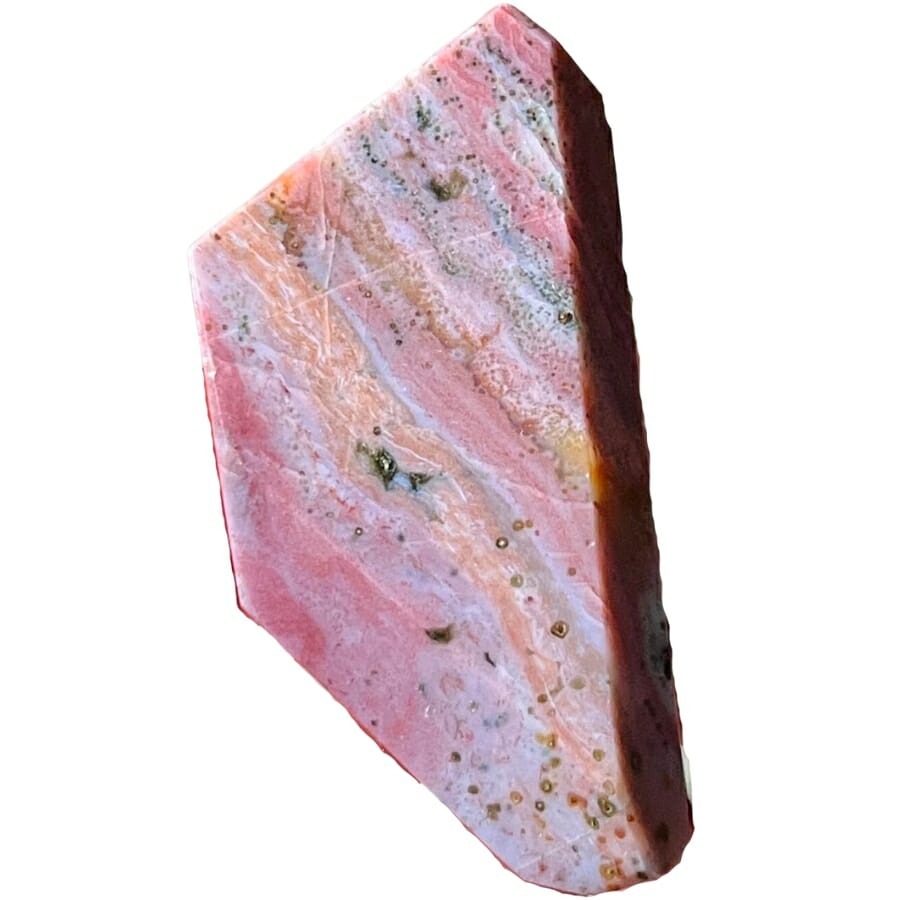
Jasper and agate are both beautiful, but they display different patterns and hues that make each of them special.
Jasper comes in a dazzling array of colors. It might remind you of a painter’s palette with splashes of red, yellow, brown, and green.
These colors are often solid, but sometimes, you might find jasper that has cool patterns, kind of like the spots on a leopard or the swirls in marble. These patterns can be caused by the minerals mixed in with the jasper or how the jasper formed.
On the other hand, agate is known for its amazing bands or rings of color. Imagine cutting into a tree and seeing its growth rings— agate is a bit like that but with more vibrant and varied colors!
Their bands can be a mix of any color that was formed because of different layers of minerals getting deposited over time.
Unlike jasper, which is often opaque (you can’t see through it), agate is often translucent. This means that if you hold a slice of agate up to the light, it might glow like stained glass!
Luster – Agate appears shiny or glossy
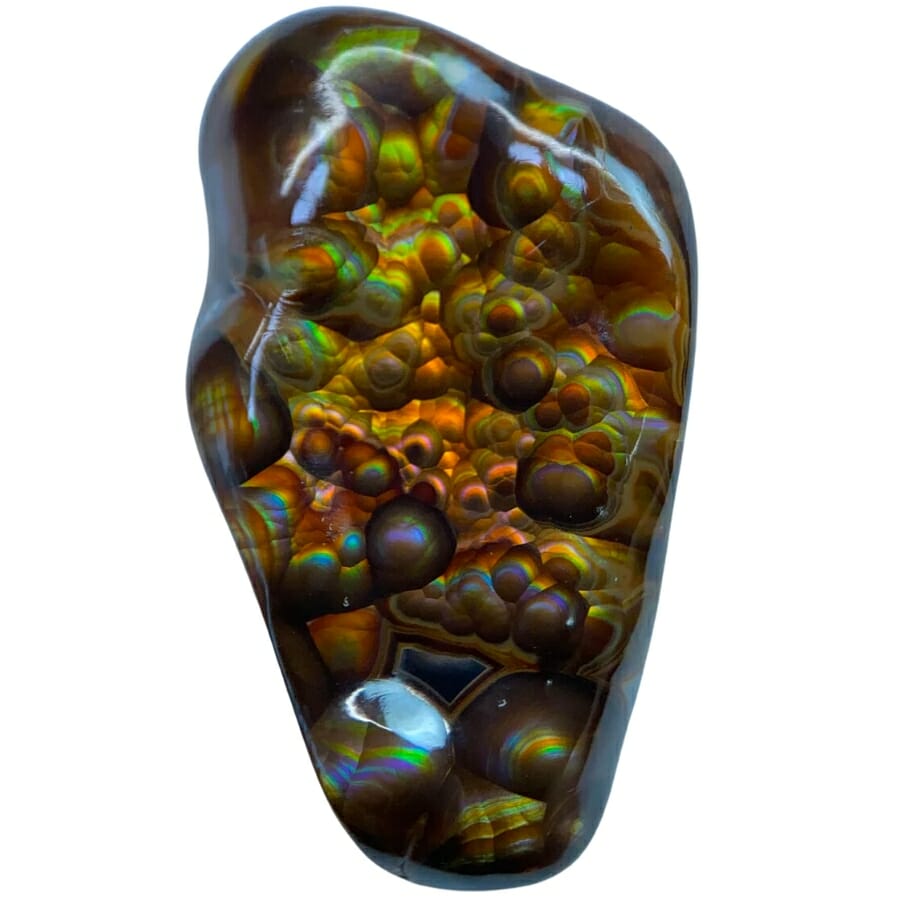
When we talk about the luster of a gemstone, we’re talking about how it shines or reflects light. Just like some objects can be shiny like a new car, while others can be matte like a chalkboard, gemstones have their own unique ways of shining too.
Jasper is not super shiny. It has a dull to earthy luster. This means that, instead of being super shiny, this gem has a more matte or muted appearance. It’s smooth to the touch, but when you look at it, it doesn’t give off a bright shine.
On the flip side, agate shines more than jasper does. It has a waxy to vitreous luster. Vitreous is a fancy way of saying it shines like glass. So when you look at an agate, it often appears glossy or shiny, especially if it’s been polished or smoothed out.
While both jasper and agate are smooth to the touch, jasper has a softer, more subdued shine, and agate gleams with a more glass-like shine. It’s like comparing a soft, fuzzy blanket to a clear, shiny window!
Fluorescence – Jasper does not fluoresce
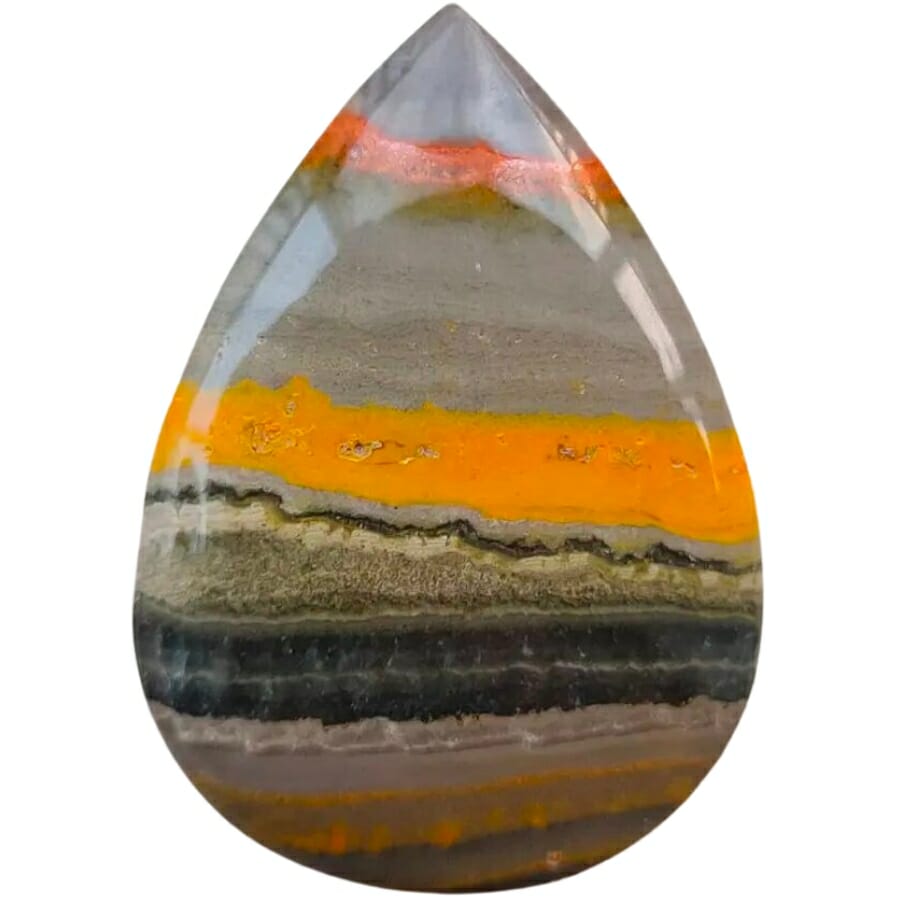
When exposed to ultraviolet (UV) light, which is a type of light that is invisible to our eyes, certain minerals can glow in bright, flashy colors. That’s what fluorescence is all about.
Jasper is a bit shy and usually does not glow under UV light. It likes to keep its appearance simple, without any flashy glow. Even under the UV light, it doesn’t reveal a glowing persona.
On the other hand, agate can be like that one friend who loves to wear neon clothes at a glow-in-the-dark party. Depending on where it comes from and what minerals are inside it, it can glow in different colors under UV light.
Agate’s glow can be really mesmerizing to look at. It’s like it has its own light show going on. It’s not every agate that will glow, but when they do, it’s a sight to behold!
So, if you ever get the chance to shine a UV light on jasper and agate, remember: while jasper typically stays its normal color, some agates might surprise you and light up with a cool glow.
Composition – Agate is a form of chalcedony, often with banding due to trace minerals.
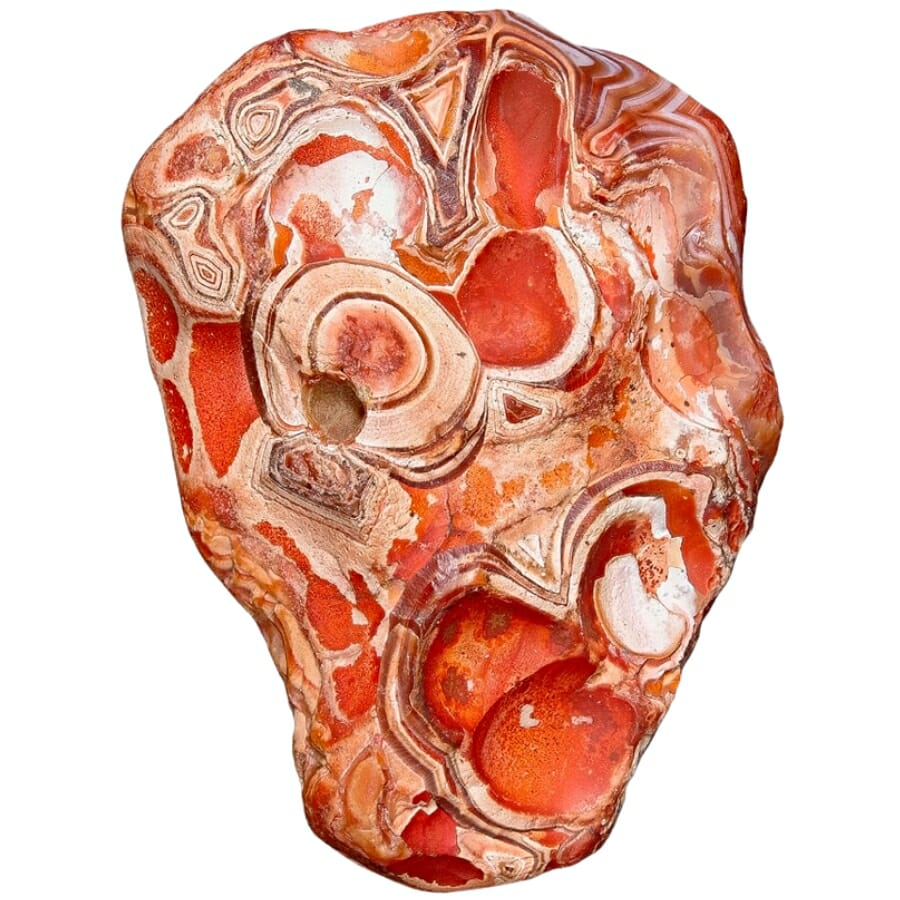
Imagine you’re baking two types of cookies. Both cookies have flour and sugar, but one might have chocolate chips while the other has raisins. Even though they share some ingredients, they’re still unique.
Jasper and agate are a bit like that in terms of their composition.
Both jasper and agate are made mostly of a substance called silica, a big part of many rocks and minerals. But just like our cookies have their own special ingredients, jasper and agate have their unique mix-ins that make them different.
Jasper often comes with extra minerals, especially clay minerals and iron oxides. These minerals mix in with the silica and give this rock its various colors and patterns. For instance, the iron oxides might make jasper red or brown.
Agate, on the other hand, is a special type of silica called chalcedony. What makes it stand out is how its silica is arranged and the banding patterns it can have. The banding happens because of different minerals that get layered in over time, kind of like the rings on a tree trunk.
So, while both jasper and agate have silica as their main ingredient, the extra minerals and the way they’re structured make them unique.
Formation – Jasper is made from ancient volcanic ash or old sediment
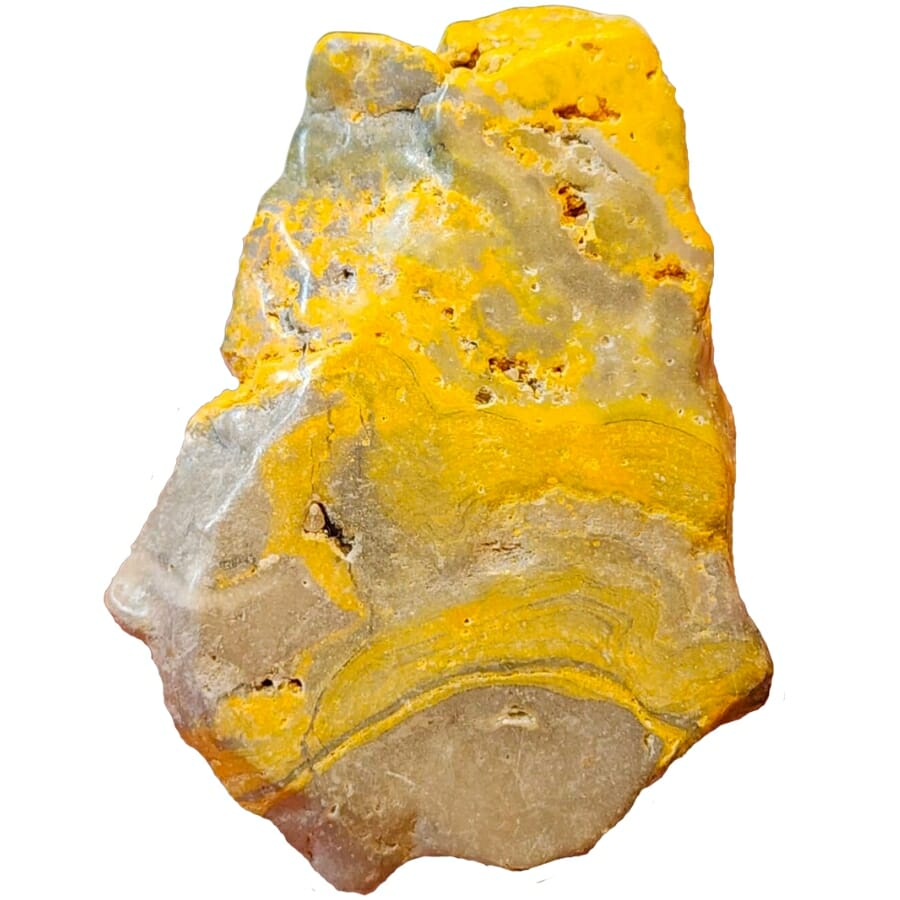
Let’s think of the Earth as a big, natural oven that bakes rocks and gemstones. Jasper and agate were baked or formed in very different ways.
Jasper is a bit like a pie made from leftovers. Here’s how: A long time ago, there were volcanoes that erupted and spewed out ash, or there might have been rivers that carried tiny bits of rock and dust.
Over time, all these materials got packed together, and with a bit of heat and pressure, jasper was formed. So, in a way, this gem is made from ancient volcanic ash or old sediment from rivers and lakes.
Agate, on the other hand, is more like a layered cake. Imagine water dripping into a hollow space in a rock, but this water has tiny bits of minerals in it. Every time water drips and evaporates, it leaves a thin layer of those minerals behind.
Over a super long time, these layers build up, creating the beautiful bands or rings agate is known for. It’s like nature making a cake with many, many layers!
Location – Agate hides in places with past volcanic activities
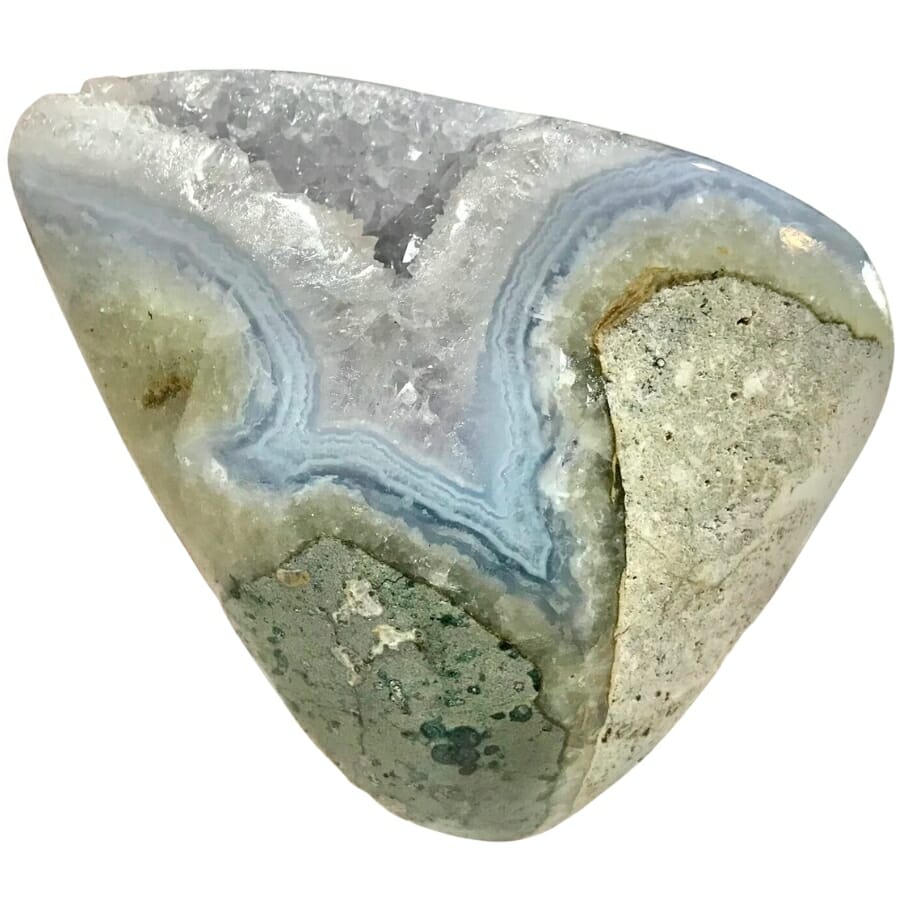
When you go on a treasure hunt for gemstones like jasper and agate, you’ll find that they pop up in different places around the world. Just like animals have favorite habitats, these gemstones have their favorite spots, too!
Jasper likes to hang out in places where there were once ancient rivers, lakes, or volcanic areas. Because it’s made from stuff like old river sediment or volcanic ash, it makes sense that you’d find it where these things used to be.
Countries like South Africa, Russia, and the U.S. have areas where jasper feels right at home. If you want to find this gem, check out our article on the rockhounding sites near you. You can also visit our recommended gem mines near you.
Meanwhile, agate has a bit of a different story. It loves being in places where volcanic activity happened a long time ago. Why? Because as volcanoes erupted and left behind hollow spaces in rocks, these spaces became agate’s favorite spots.
You can find agate in countries like Brazil, Mexico, and again, the U.S. To know the specific locations where you can find agates here, check out our article on it.
Price – Jasper is generally more affordable
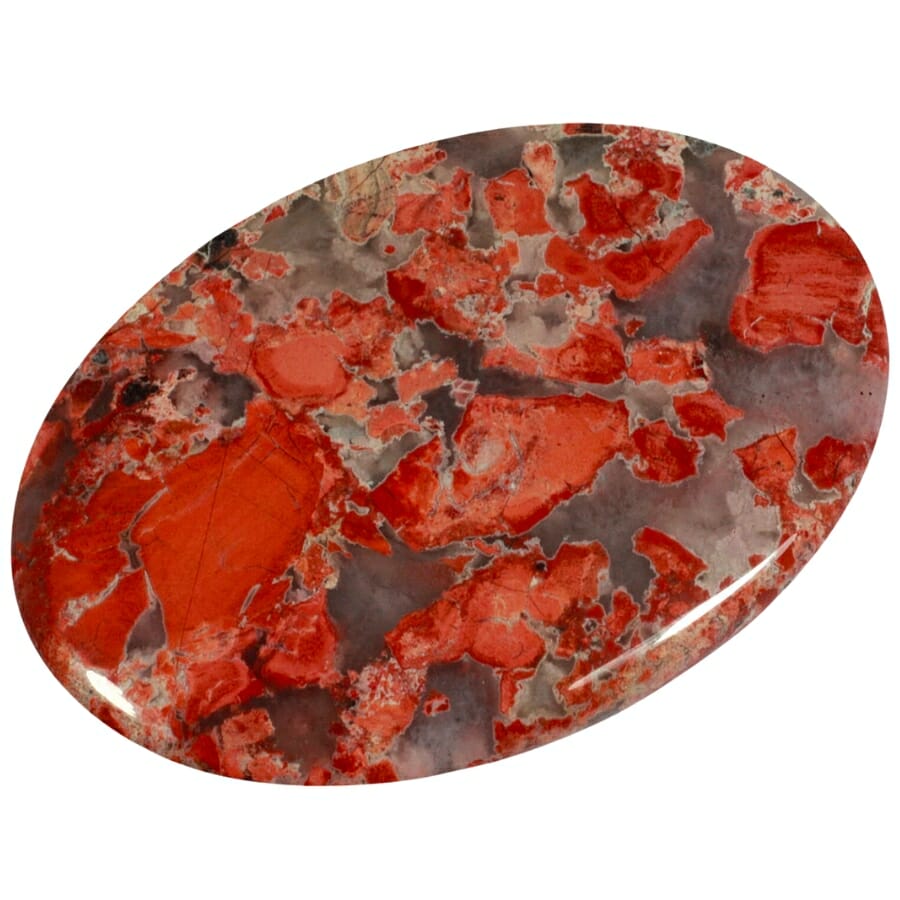
Just like toys in a store, gemstones can come with different price tags. Their prices can be influenced by a bunch of factors, just like some toys might cost more because they’re bigger, rarer, or more popular.
Jasper, in general, is quite common. Because there’s so much of it, the value of jasper can be lower. You can find lots of it around the world, which means many people can own a piece without emptying their piggy banks.
However, some types of jasper with super cool patterns or rare colors might be a bit pricier. It’s like a limited edition toy that everyone wants!
Agate, with its stunning bands and layers, can have a wider range of prices. Simple stones that are more common might not be too expensive. But agates with unique colors, clear banding, or special features can cost more.
Think of it like a toy with extra features or cool designs. The price of agate can go high if it stands out and looks extra special.
Jasper vs Agate – The Similarities
As we’ve mentioned earlier, jasper and agate share just as many similarities as differences. Below are the areas where these two captivating gemstones are the same:
Crystal Structure – Both jasper and agate have microcrystalline structures
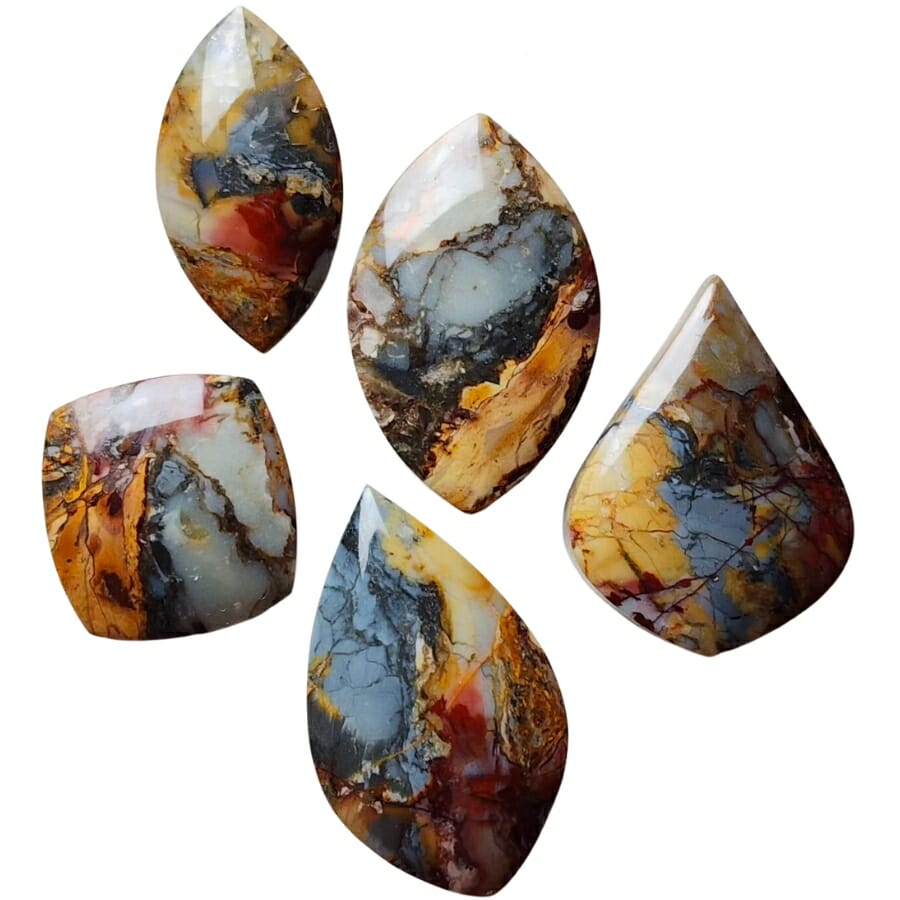
Every gemstone is made up of tiny pieces called crystals, and these crystals fit together in special patterns, just like pieces in a puzzle. Jasper and agate have some cool similarities when it comes to this crystal puzzle.
Both jasper and agate are made of silica. But here’s the fun part: the silica in both these gemstones arranges itself in super tiny, fine structures that are so small, we can’t even see them with our eyes!
This type of structure is called “microcrystalline.” Think of it like the tiniest sand grains you can imagine, all packed together.
Because of this microcrystalline structure, neither jasper nor agate forms big, pointy crystals that some other gemstones might have. Instead, they have a smooth and even appearance.
Cleavage – Agate and jasper both do not have cleavage and will break with a conchoidal fracture
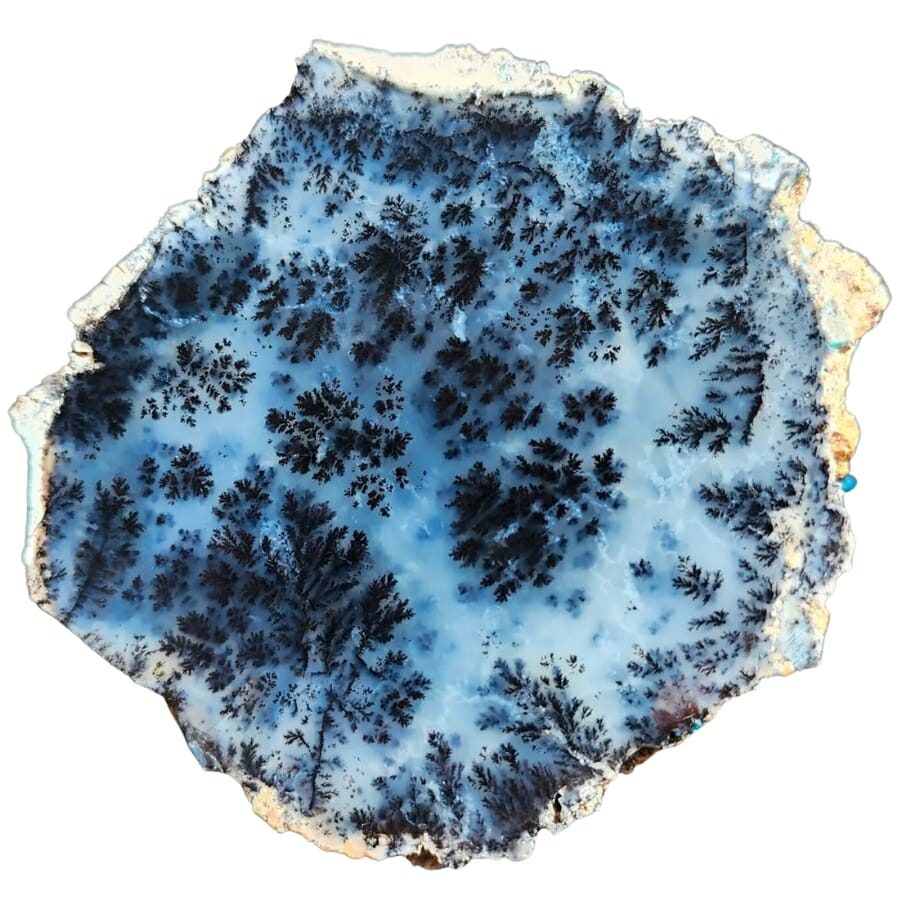
Cleavage is all about how a gemstone breaks or splits when it’s hit or put under pressure. It’s like the way some chocolates snap along lines when you break them apart.
Jasper and agate have some interesting things in common when it comes to this.
Actually, both jasper and agate are kind of rebels when it comes to cleavage. While many minerals and gemstones have natural lines or planes where they prefer to break, these two don’t really have this tendency.
Instead of splitting along neat and tidy lines, they tend to break in a more random, conchoidal manner. This means they break in curved shapes, a bit like the way thick glass or an old bottle might shatter.
What’s cool about this similarity is that it tells us something about their internal structure. Because they don’t have natural “splitting lines” or cleavage planes, both jasper and agate are a bit tougher and more durable.
Density – Jasper and agate have the same density
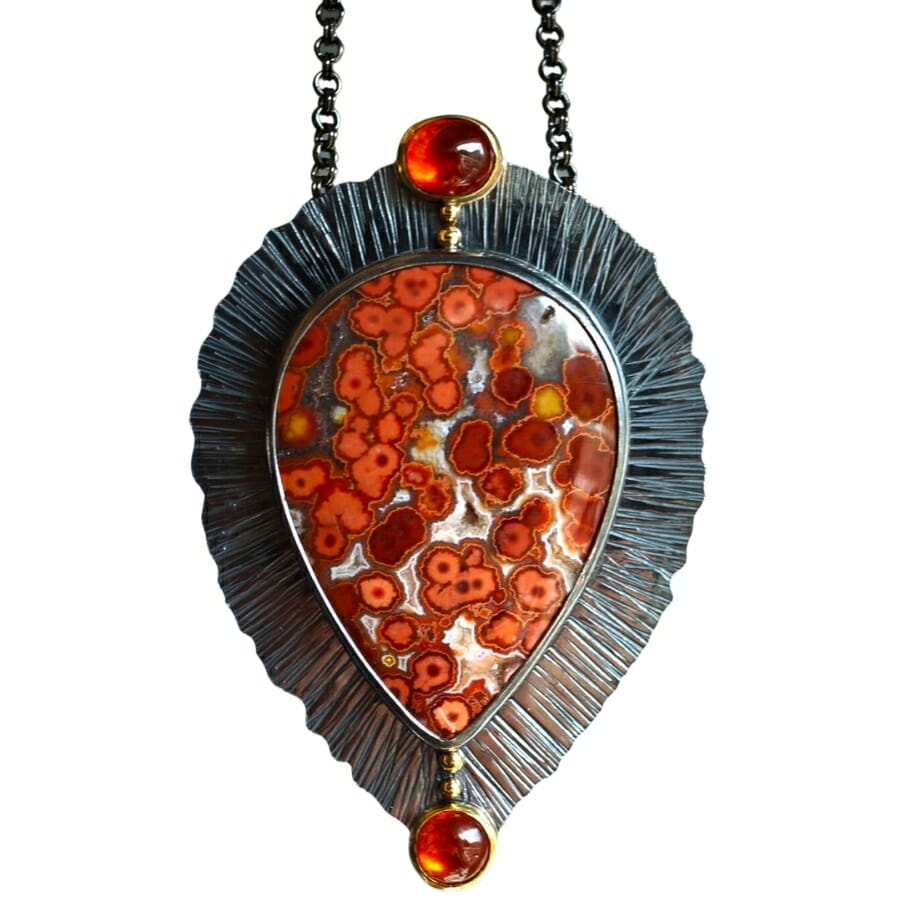
Imagine you’re at a pool party, and there are two different types of balls: one made of foam and one made of rubber. If you toss them both into the water, the foam ball might float because it’s less dense, while the rubber ball might sink since it’s denser.
Density is a measure of how much stuff (or mass) is packed into a certain amount of space. Just like those balls, jasper and agate also have their own densities.
In fact, they’re a lot alike when we talk about their density! That’s because they’re both made mainly of the same material: silica. And because they share this main ingredient, they end up having a similar heaviness or density for their size.
Both jasper and agate have a density that’s a bit heavier than many common rocks you’d find in your backyard. If you held a piece of each in your hands, they’d feel pretty similar in weight for their size, like holding two rubber balls of the same size.
Streak – Agate and jasper both have white streaks
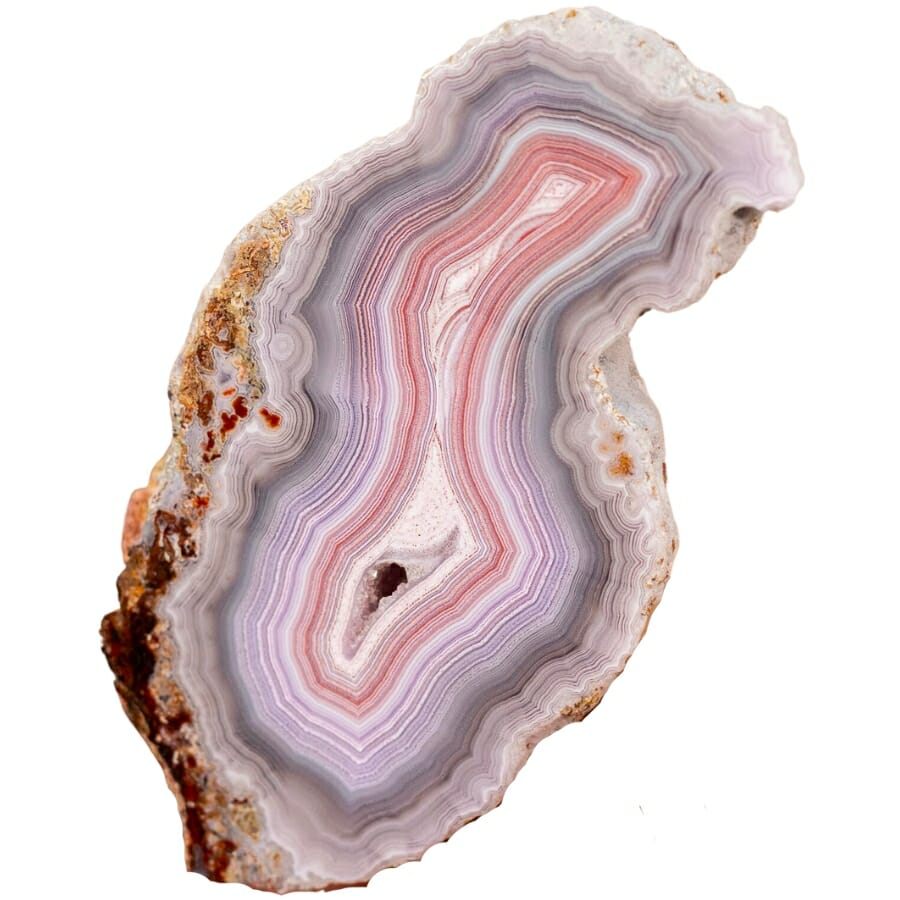
When we talk about streaks in the world of rocks and minerals, we’re not chatting about running or hair highlights.
Instead, streak refers to the color a mineral shows when it’s rubbed on a rough piece of white tile. Think of it as the mark a mineral leaves behind, kind of like coloring with a crayon on paper.
Even though agate and jasper can appear in all sorts of dazzling colors and patterns on the outside, their streaks have a neat similarity. Both of these gemstones often leave a white or colorless streak behind!
So whether you’ve got a fiery red jasper or a blue-banded agate, if you did the streak test, you’d likely see a white or off-white mark.
Hardness – Jasper and agate have a Mohs hardness of 6.5 to 7
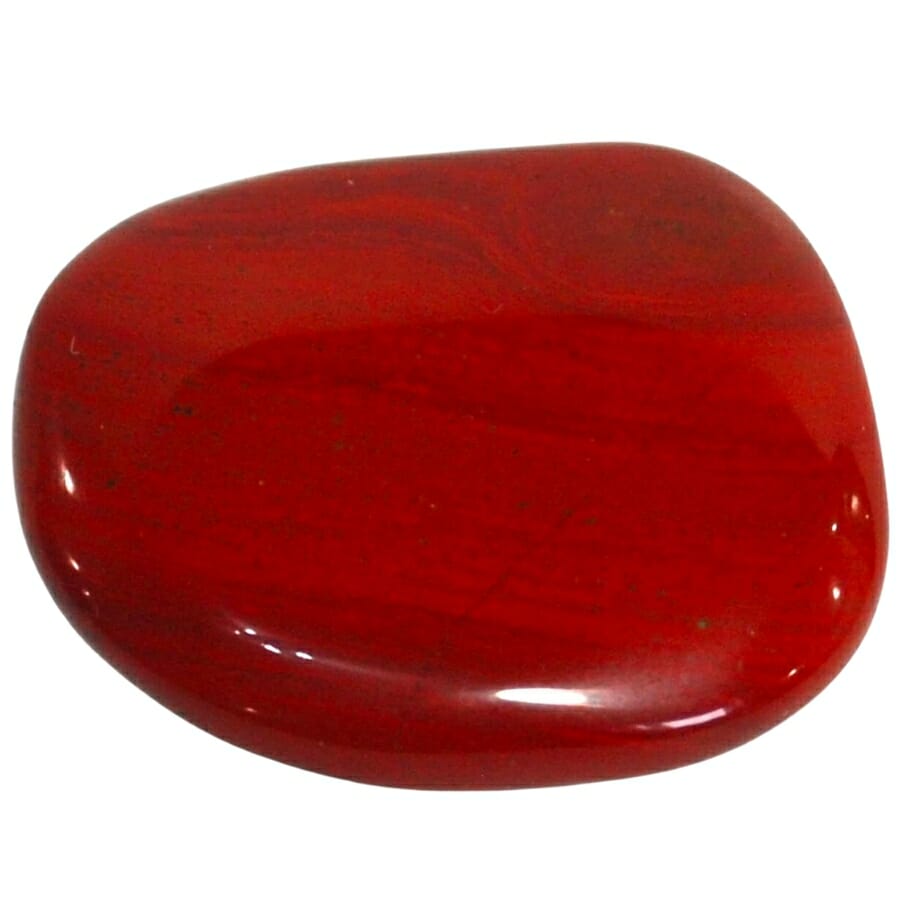
When you think of “hardness”, you might think about how tough something is or how difficult it is to scratch. In the world of rocks and minerals, hardness is a scale that tells us which minerals can scratch others.
On this front, both jasper and agate are pretty tough cookies. They rank around the same spot on the Mohs Hardness Scale, a tool that measures how hard minerals are.
Jasper and agate both come in at around a 6.5 to 7 on this scale. This means they’re tougher than a lot of other minerals out there!
If you tried to scratch them with something like a coin, it wouldn’t leave a mark. But if you took a harder mineral, like a quartz crystal, it could potentially scratch them.
The reason they share this toughness is that they’re both made mostly of silica, and it’s this silica that gives them their hard and durable nature.
Magnetism – Both agate and jasper are non-magnetic
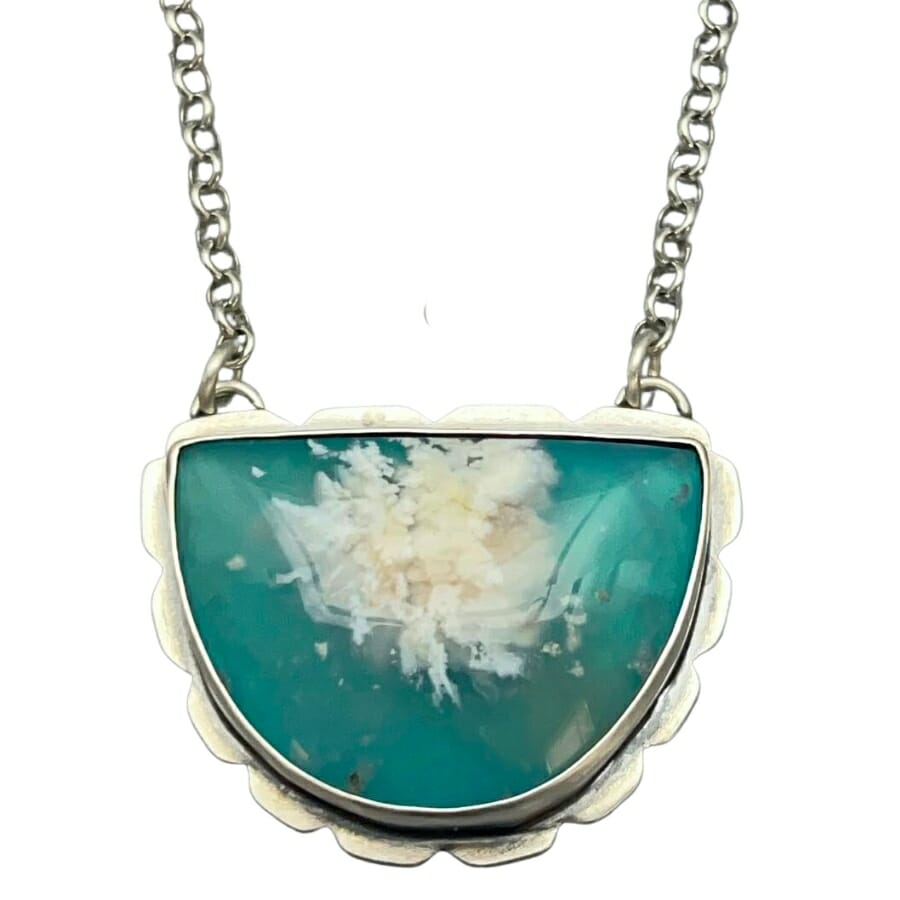
When we think about magnetism, we usually imagine magnets sticking to the fridge or pulling iron objects toward them. But when it comes to rocks and gemstones, magnetism can tell us something cool about what they’re made of.
When it comes to jasper and agate, magnetism might not be the first thing that comes to mind. Both are generally not magnetic. That means if you held a magnet up to them, they wouldn’t be attracted to it.
However, there’s a twist. Sometimes, both jasper and agate can have tiny bits of other minerals mixed in with them. And some of these minerals might be magnetic.
For example, if there’s a little iron in the jasper or agate, it might show a slight magnetic pull. But this is more about the extra stuff in the stone, not the gemstone itself.
Conductivity – Jasper and agate are both insulators
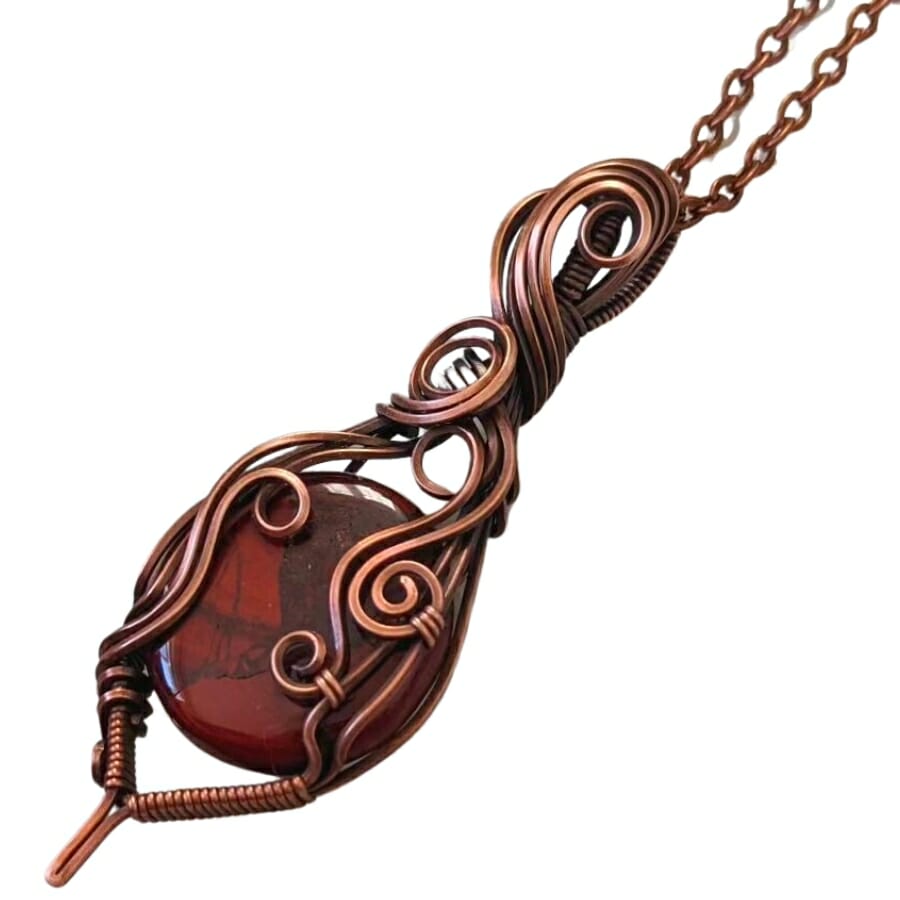
If something is conductive, it means it has the ability to carry electricity. It’s like how some materials let electricity flow through them easily, kind of like water through a hose, while others block it or slow it down.
In the case of jasper and agate, they are generally not the best conductors of electricity. They’re mainly made up of silica, which is known to be an insulator, which means it does not let electricity pass through it easily.
Sometimes, however, these gemstones might have tiny bits of other minerals mixed in with them. If these minerals are conductive, like certain metals, then parts of the jasper or agate might become slightly conductive too.
But most of the time, both jasper and agate stop the flow of electricity. So, when it comes to conductivity, these two gemstones are on the same team.
The Easiest Ways To Tell Jasper and Agate Apart
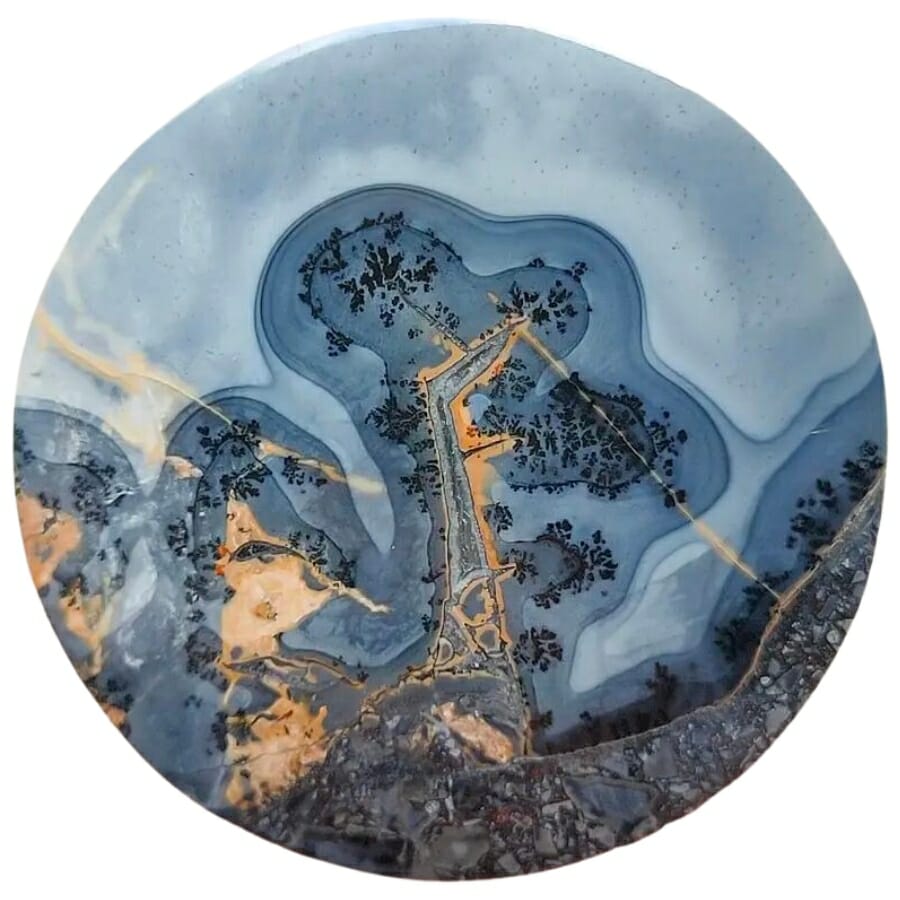
It pays to know the differences and similarities between jasper and agate if you want to successfully identify them. But if you need more practical guidance on how to tell them apart, below are simple tests or observations that you can do:
Check its color and patterns
Jasper can appear in a wide range of solid colors without many clear layers. While it might have patterns, they’re usually not in neat bands.
Meanwhile, the signature look of agate is its bands or layers. It’s like the rings on a tree trunk. If the stone has clear, wavy, or concentric layers, it’s probably agate.
Do the transparency test
Take the stone and hold it up to a light source, like a flashlight or even sunlight.
Jasper is mostly opaque, so if you hold it up to the light, it’s like looking at a wall. Meaning, no light will pass through it.
Meanwhile, agate loves to show off with its layers! It’s often semi-transparent to translucent, like when you’re looking through frosted glass. When held to the light, it will often let some light through, especially around its edges.
Feel the surface and try a water test
The surface of jasper, even when polished, can feel somewhat grainy or earthy to the touch. On the other hand, agate usually has a smoother, glossier feel when it’s polished. It’s like touching a piece of shiny glass.
As for a water test, when you drop some water on jasper, it will usually sit on the surface or get absorbed slowly. In contrast, water on agate tends to bead up or roll off more easily because of its smooth, glassy surface.

